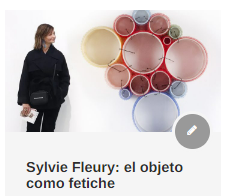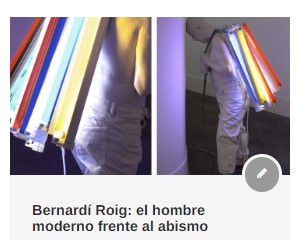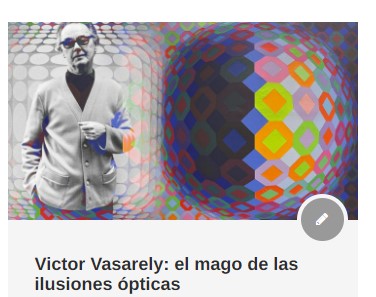Woman aflame, the last of her line. Dalí and his allegories of the unconscious.
Setdart offers a unique opportunity to acquire the monumental bronze by Salvador Dalí “Woman aflame” currently on display at the MOCO Museum in Barcelona. The piece, which has only 8 numbered copies, an exceptional event given the rare occasions on which a Dalí bronze of this size and importance is put on the market.
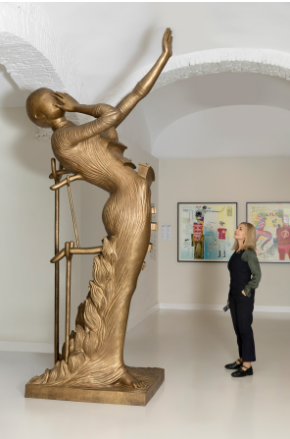
In Spleen II, one of his poems collected in The Flowers of Evil, Baudelaire speaks of a cabinet full of drawers that hide drawers that, in turn, hide even smaller drawers. For the French poet, this old secreter is a metaphor of a mind full of memories and secrets nested one inside the other, but also of the multiple compartments into which a single temperament is fragmented: “a large chest of drawers crammed with invoices, sweet verses, obituaries, lawsuits, romances…. With abundant hair tangled in receipts, it hides fewer secrets than my sad brain”.
For Dalí, the drawers were also metaphors for the complexity of the psyche. His inspiration, however, was not Baudelaire but Freud, who emerged as the great star of all the surrealists. In The Interpretation of Dreams, he presents the image of the chest of drawers as a transcript of the unconscious and its tendency to hide.
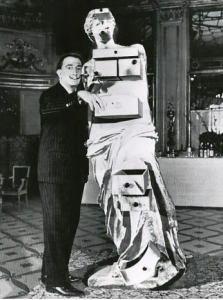
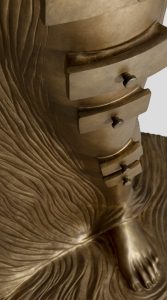
The genius of Empordà painted his first anthropomorphic desk in 1936, the year in which he produced one of his most celebrated works, The Venus de Milo with drawers. The following year he would paint the emblematic oil painting La jirafa en llamas, where the iconography of the Freudian motif is enriched with ominous connotations linked to the difficult political situation the country was going through.
Almost fifty years later, Dalí created a monumental sculpture in which he returned to the theme of the woman with drawers in order to establish new dialogues with his own past and, at the same time, to experiment with the technical and ideosyncratic possibilities of such a large-scale bronze: Woman Aflame (1980) is a keystone of the Dalinian surrealism of the last period.
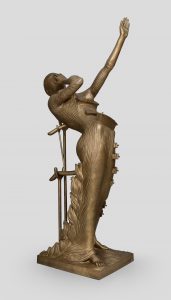
In this subjugating sculpture, some of Dalí’s most intimate obsessions are synthesized, which, when oversized in a monumental bronze, acquire new meanings. The imposing female body curves at torso level, bending backwards and covering her eyes with her right hand, thus extending the gesture of disorientation and loss that was already present in the figure of The Giraffe in Flames. The elements of fire and drawers converge in the statue as premonitory and psychological symbols. The flame here does not come out of a giraffe but crawls like dragon’s crests up a turned leg, along the front of which the drawers of the “anthropomorphic closet”, as Dalí himself called it, follow one after the other. “Only psychoanalysis can open those secret drawers,” said Dalí following Freud.
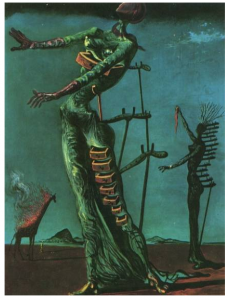
In the Basel Museum painting the fire was linked to the Spanish Civil War and the premonition of World War II. In this monumental piece of 1980, on the other hand, it can be linked to eroticism and unsatisfied passion, in relation to the problems confessed by the artist of his sexual impotence.
Likewise, the crutches that support the muse’s back (another basic prop of the surrealist artist’s imaginary) suggest ambivalent meanings, as they are fragile anchors to reality and at the same time ways of accessing the subconscious.
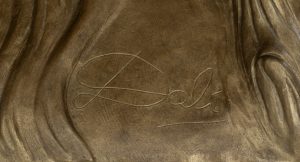
In terms of technique, the bronze has a high quality finish, noticeable in the modeling and textures. The dress adheres to the body, emulating the Greek technique of wet cloths, giving sensuality to the curves and enigmatic power to the Dalinian allegory.
The auction of Woman aflame is, therefore, an event of total relevance for all those collectors passionate about the unique and incomparable universe that the genius of Figueras gave birth to.

